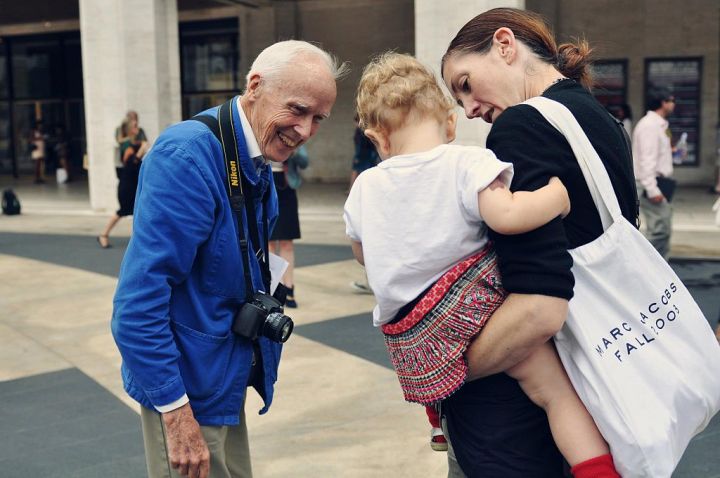
“He was a hugely ethical journalist. And he was incredibly open-minded about fashion, said Dean Baquet, New York Times executive editor. “To see a Bill Cunningham street spread was to see all of New York. Young people. Brown people. People who spent fortunes on fashion and people who just had a strut and knew how to put an outfit together out of what they had and what they found.”
Cunningham could easily be described as a humble photographer despite his fame, saying that he never wanted to be the subject. And while that may make it difficult to pinpoint exactly how his work played a role in shaping photography today, most that knew him or his work would undeniably say his photography inspired today’s images in many ways. As friends, admirers, and fellow photographers share their thoughts in the wake of the artist’s death, they simultaneously share the ways that Cunningham influenced what photography is today.
Great images aren’t necessarily staged or airbrushed
While Cunningham is described as a fashion photographer, he was often more interested in the fashion on the streets than on the catwalk. He would often ride his bike around New York City, snapping photos of ensembles that struck him. What resulted was a series of images that were as honest as they were powerful. Without staging or airbrushes, Cunningham’s work still captured the changing fashions simply through observation.
“I go out every day,” Cunningham wrote back in 2002. “When I get depressed at the office, I go out, and as soon as I’m on the street and see people, I feel better. But I never go out with a preconceived idea. I let the street speak to me.”
Professional photography can tell stories by expanding beyond the expected location
Photojournalism has historically always been a separate genre, but Cunningham’s work helped to introduce journalism as a style that could be applied to any genre. Fashion photography was expected at fashion shows and parties, not street corners. But to Cunningham, that’s where the fashions were the most interesting, so that’s where he took his photographs. By taking his particular genre of photography outside where it was expected, he helped to tell a broader story.
“He taught me (his pictures taught me) that while what was on the catwalks was interesting, it was what happened to the clothes afterward — how they were used, or not used — that really mattered,” wrote Vanessa Friedman, the chief fashion critic at the New York Times. “It wasn’t that he rejected fashion; he loved it, with a never-ending enthusiasm for discovery. But he understood that its power was personal. Clothes are the front line of communication; they are the first thing we say about ourselves to each other, and the first judgment we make in turn. That was his story. And it is why his videos and columns were so obsessively interesting.”
When photographing people, gestures often make more of a statement than the clothing
When shooting on the streets, Cunningham didn’t look for just new or unusual trends – he looked for images that captured personality. While even the editor-in-chief of Vogue, Anna Wintour, says that people dressed for Cunningham, to him it was about more than the clothing.
“When I’m photographing, I look for the personal style with which something is worn – sometimes even how an umbrella is carried or how a coat is held closed,” he has said. “At parties, it’s important to be almost invisible, to catch people when they’re oblivious to the camera – to get the intensity of their speech, the gestures of their hands. I’m interested in capturing a moment with animation and spirit.”
Anonymity is a powerful tool for photographers
Cunningham wasn’t exactly thrilled about his fame. In fact, he often waited until his subjects were distracted enough to not be consciously thinking about the camera in the room. His candid style of fashion and street photography has influenced many younger photographers today – and it isn’t a coincidence that cameras designed for street photographers are often understated, small, and old school in their design (although Cunningham is often seen using a Nikon DSLR in his later years).
“I go to different places all the time,” Cunningham said. “And I try to be as discreet as I can. My whole thing is to be invisible. You get more natural pictures that way, too.”




